Lora Conrad lives on a small farm in Van Buren County.
The many soft blue flowers shining through the green on the forest floor in early spring just might be a lovely native spring blooming perennial you don’t want to miss: Spreading Jacob’s Ladder (Polemonium reptans).
In Iowa, its common name is just Jacob’s Ladder, as it is the only species of the Polemonium genus native to this state. It also has common names of Greek Valerian and Creeping Polemonium. The Polemonium genus is a member of the Phlox family. The Greek Valerian name is a transfer of a name used for a similar plant in the Polemonium genus in England by Europeans in the Americas.
The name Jacob’s Ladder refers to the leaves. Early Europeans believed they resembled Jacob’s Ladder in the biblical story of Jacob’s dream about a ladder leading to heaven. Though that may be a bit over the top, the little plant is “heavenly,” and the common name has stuck for this species and another two members of the Polemonium genus.
Spreading Jacob’s Ladder is native to Iowa, Western Jacob’s Ladder is found to the west, and Appalachian Jacob’s Ladder is the species found in Appalachia.
Look for Jacob’s Ladder in shady, moist woods in early spring. It is a delicate little thing with pinnate compound leaves with a terminal leaflet. They are background leaves one is not likely to notice before the plant blooms. The leaves and the blossoms are on separate stalks. Minnesota Wildflowers described the foliage this way:
Leaves are compound, alternately attached with leaflets opposite or alternate. Lower leaves have long stalks and up to 17 leaflets, upper leaves become shorter stalked with fewer leaflets, and simple leaves at branch tips. Leaflets are lance-elliptic, ½ to 1½ inches long and up to about ½ inch wide, pointed at the tip.
Here is photo showing the details of a leaf.
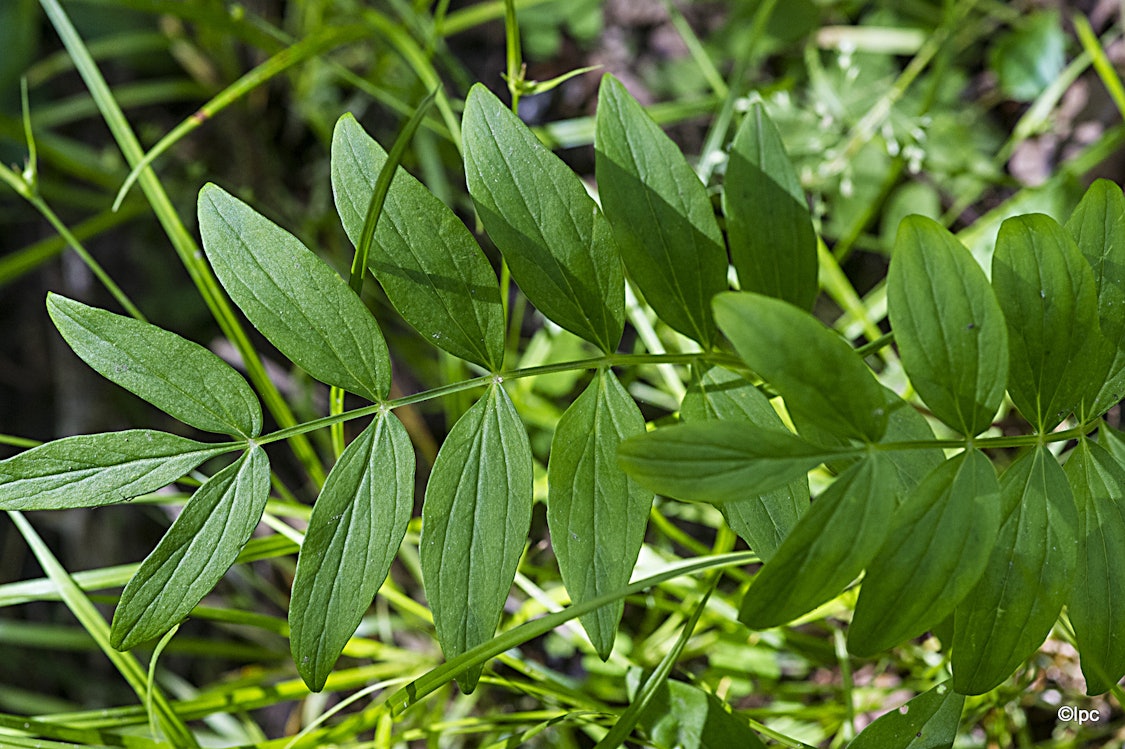
Jacob’s Ladder blooms from mid April to about mid-May in southeastern Iowa. The woods are full of eye-catching blossoms and plants at that time, so those small delicate ladder leaves do not compete with the drama of Trillium recurvatum and the many other fast growing plants on the woodland floor—until the first blossoms pop open.
You can see in this photo that the blue is eye-catching, similar to bluebells in color but not shape, and earlier than bluebells. This is a mid-April photo.
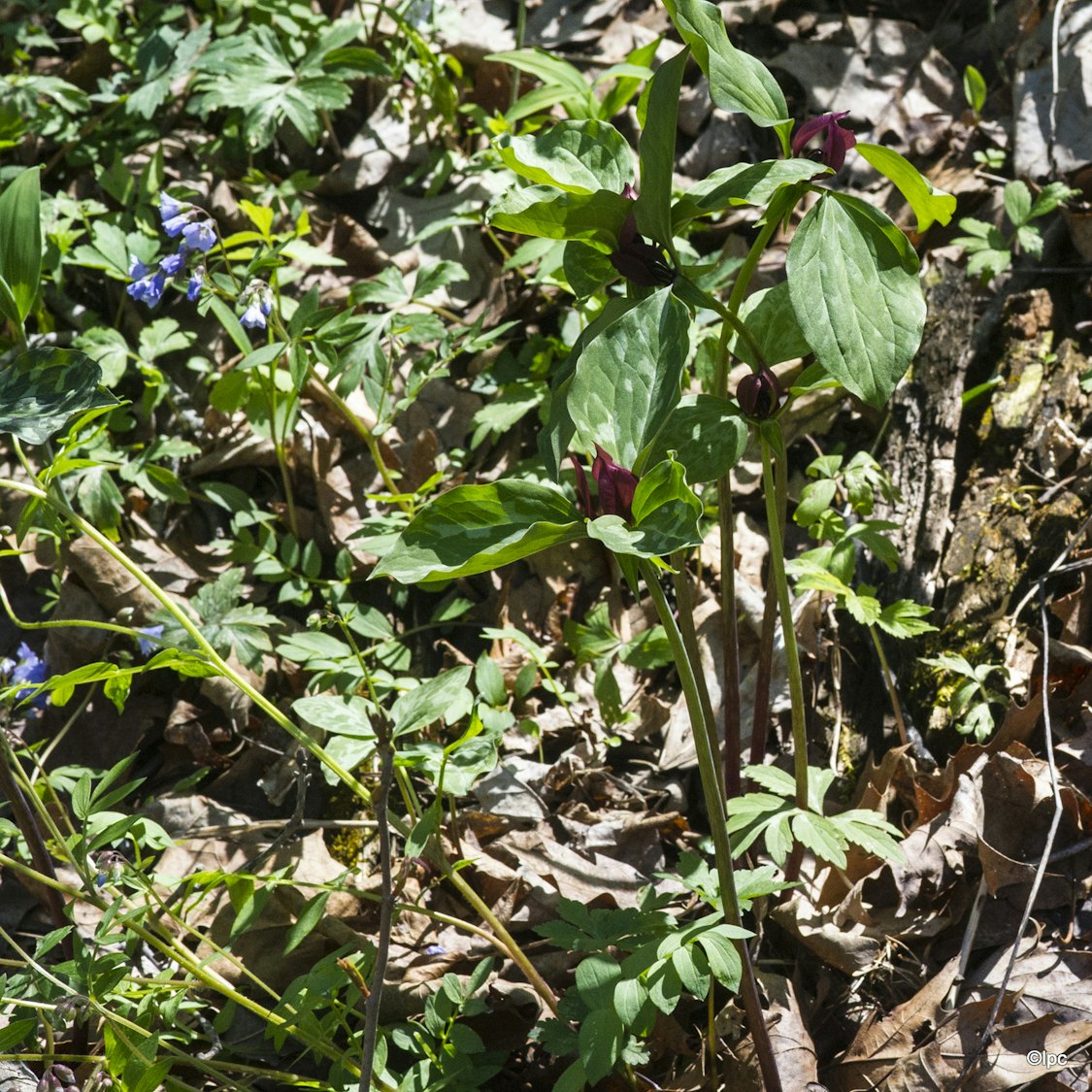
When you focus your eyes or camera on the plant—there it stands with several individual stalks of flowers shining above the leaves. The entire plant in Iowa is typically one to two feet tall. However, it can grow to three feet in height. The flowers are given center stage by the leaves, which spread and flatten beneath the flower stalks—hence the full common name Spreading Jacob’s Ladder.
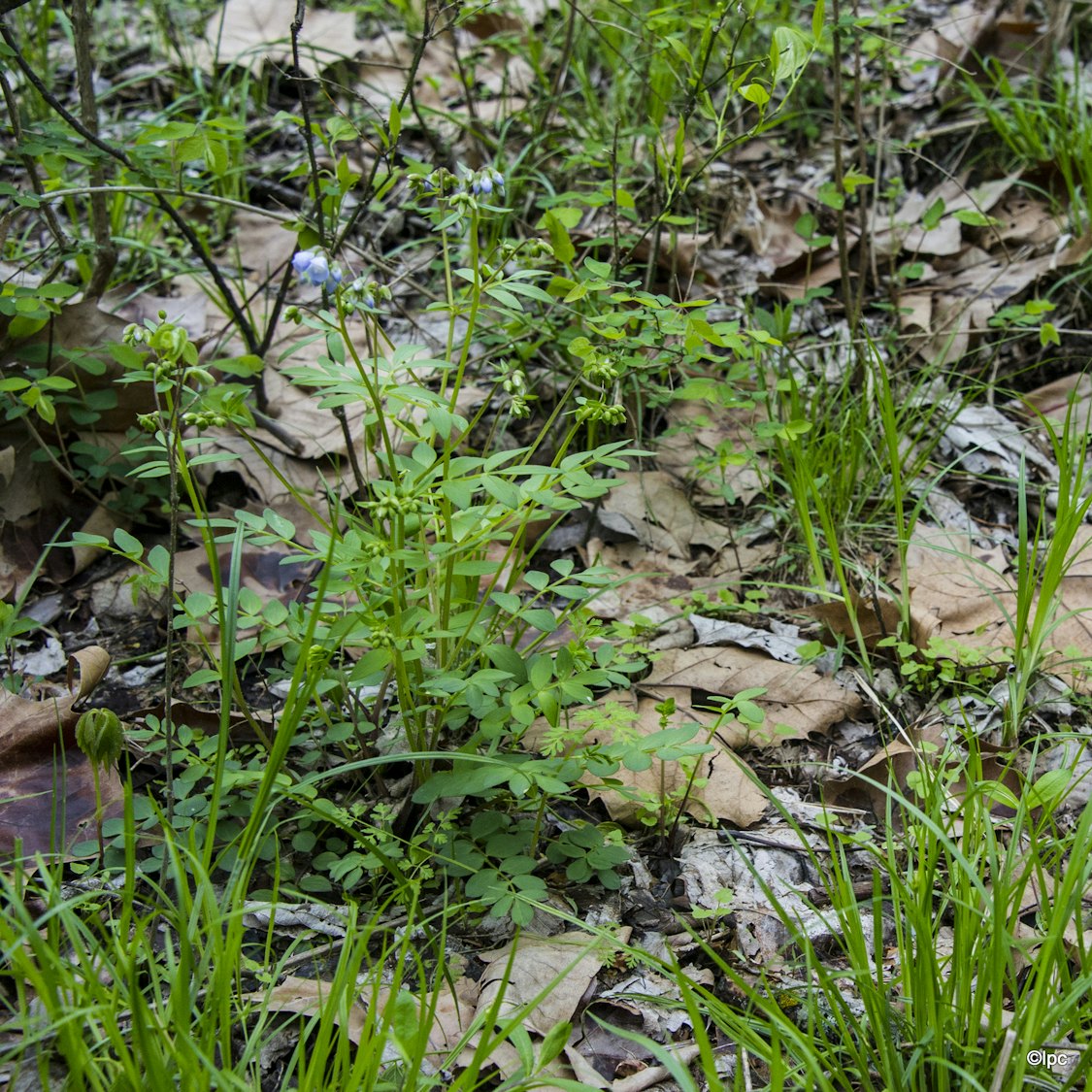
By April 30, Jacob’s Ladder is blooming along with Trillium recurvatum and Spring Beauty in southeastern Iowa. Its leaves are down under them, yet visible. This image allows you to compare the size of its blossoms to Spring Beauty flowers, which are ubiquitous in Iowa spring woodlands.
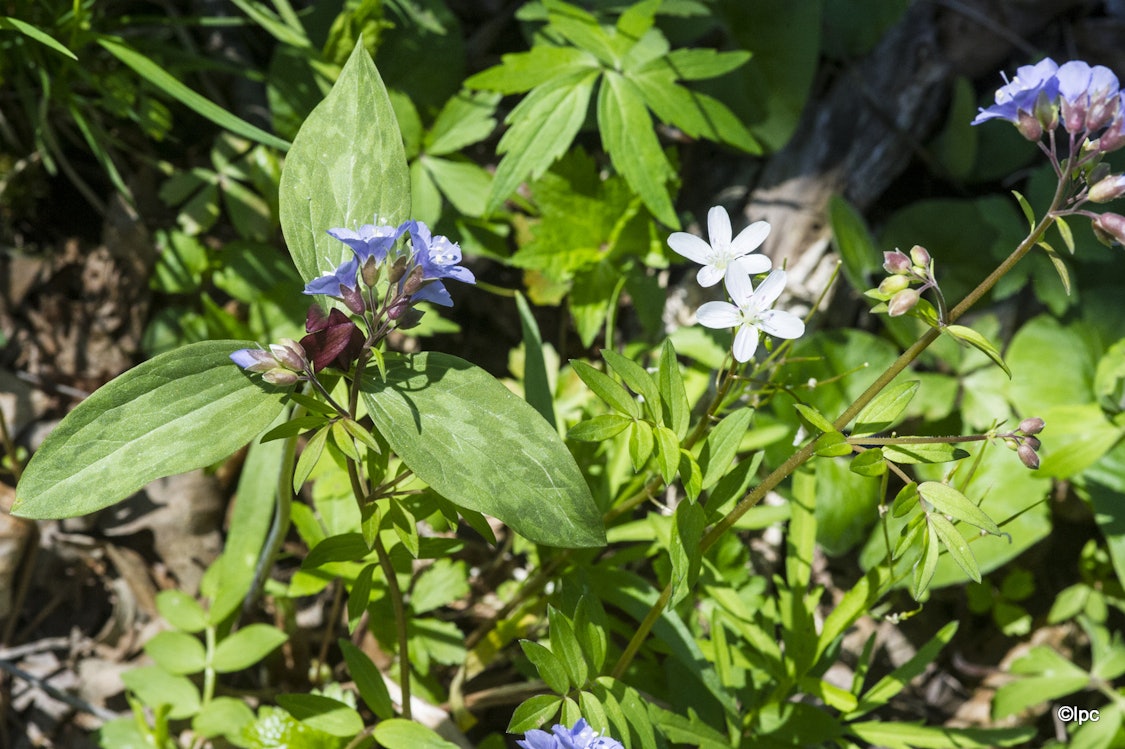
The green flower buds are at the tips of their stalks. In this photo, some show just a bit of white through the end. This becomes a bit of blue bursting forth on other stalks. Flowers just opening on another stalk. All flowers on a stalk open and close together.

See the delicate beauty of the blossoms as they begin to open, with one or two clusters on a stalk, in this next photo.
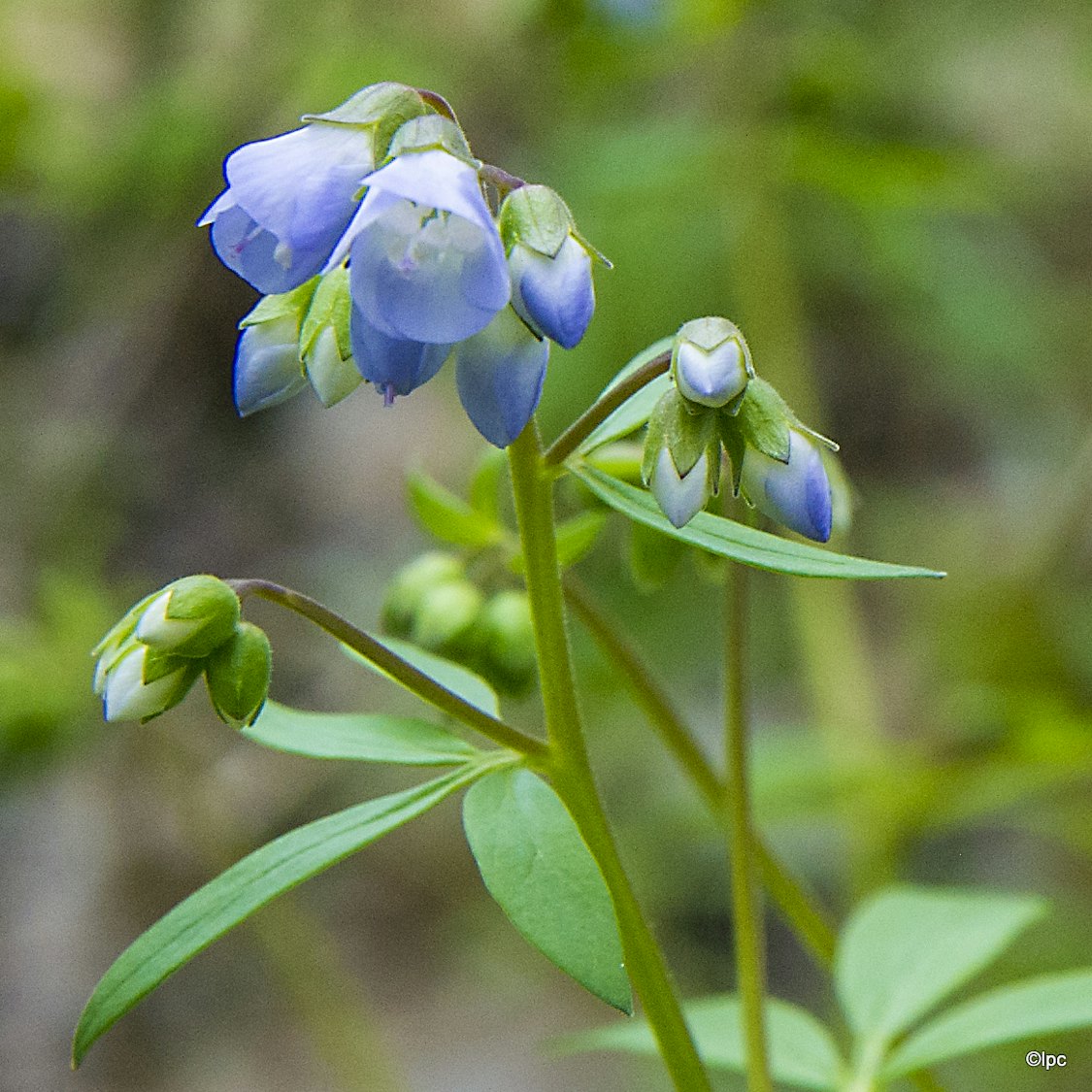
The fully open blossoms are shown in this next photo. Note that all on the stalk are now open together. The leaves you see are from a Spring Beauty entangled with it.
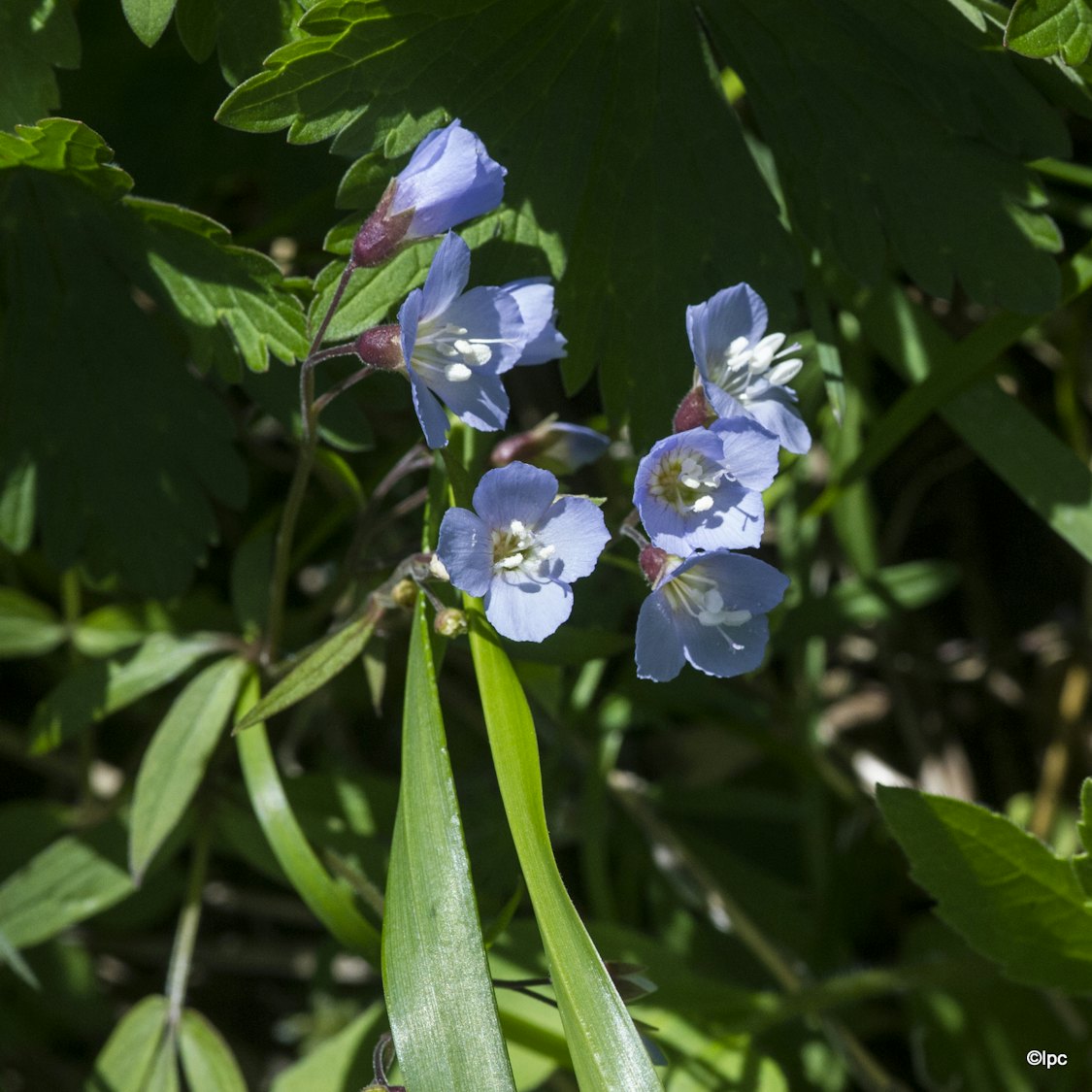
These two photos show some secondary branches on the stalks that will bloom later than the main limb, a front and a side view.
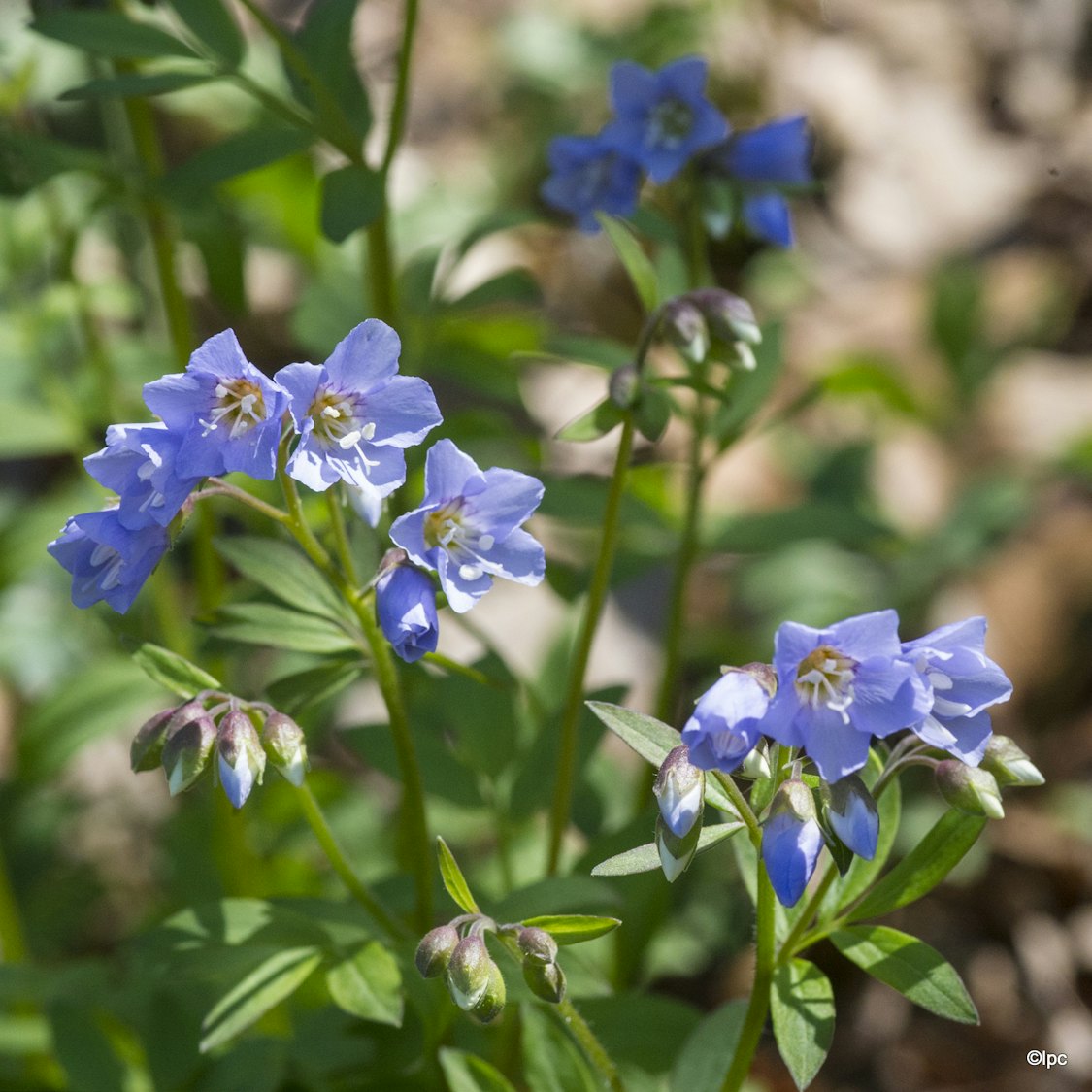
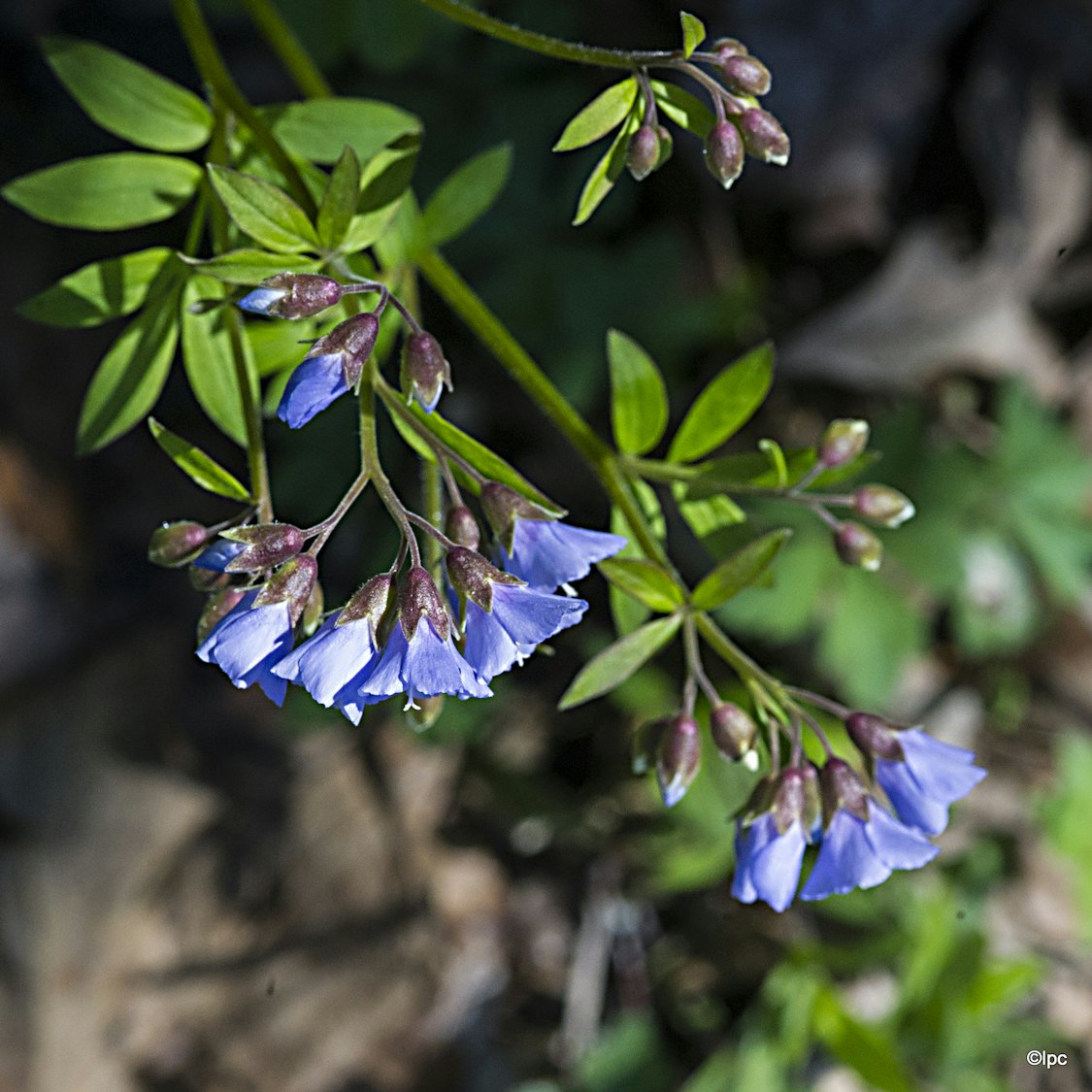
Sometimes a few leaves are intermixed with the blossoms. In this photo taken in mid-May, you can see numerous bloom stalks with their clusters of flowers at the end. Seed pods have already formed on two taller stalks (upper part of the photo). Bloom season will soon be over.
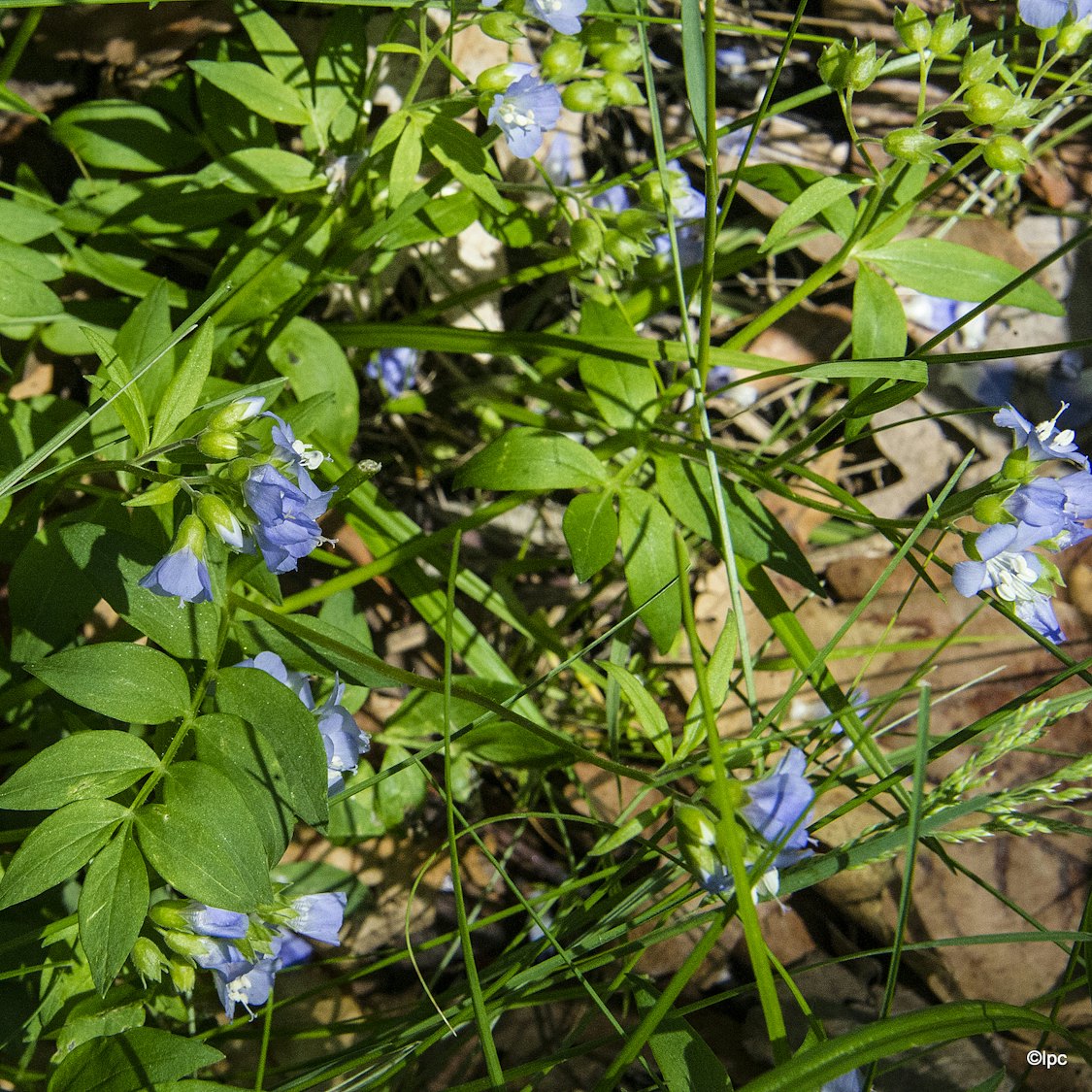
The seed pods enlarge quickly. Each holds only a few seeds. Here a plant has its last open flowers, some that have withered and some full seed pods.
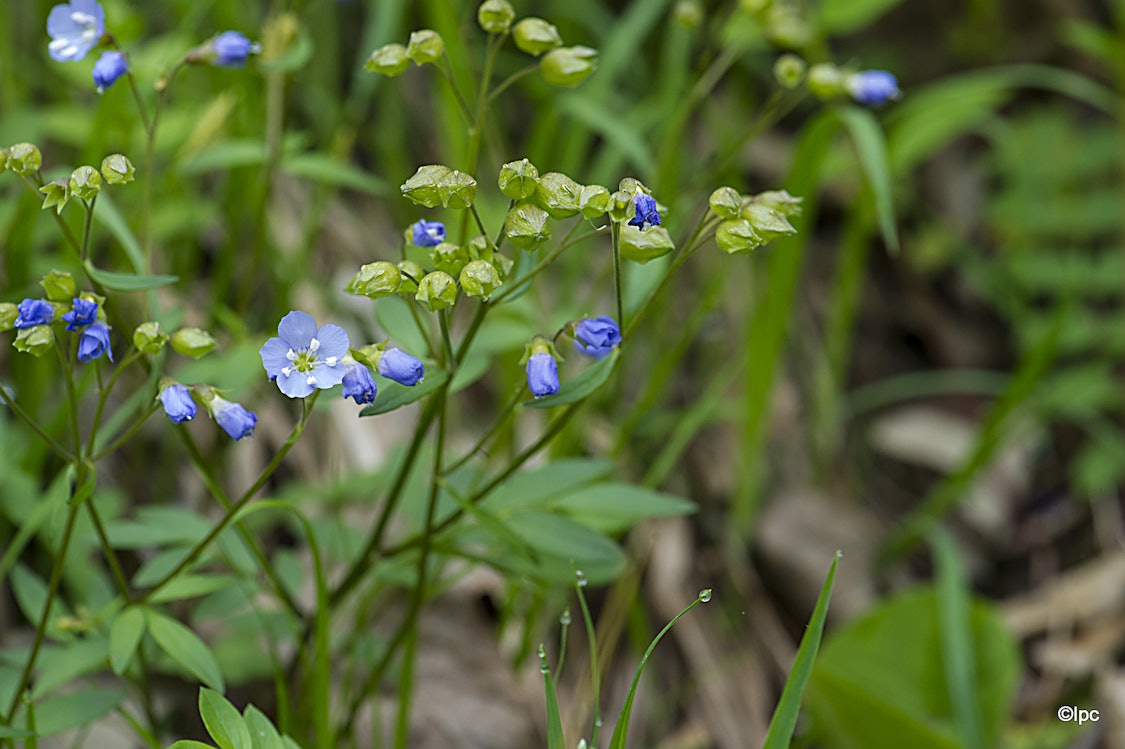
The next photo shows just how beautiful Jacob’s Ladder flowers are, despite being small and often obscured by other plants. It has been enlarged to show its details.There are five petals with a bit of purple at the base of each petal and five stamens tipped with large white anthers. The stigma extends beyond the anthers. As a result, self-pollination is unlikely, so insects must cross-pollinate for seeds to be produced.
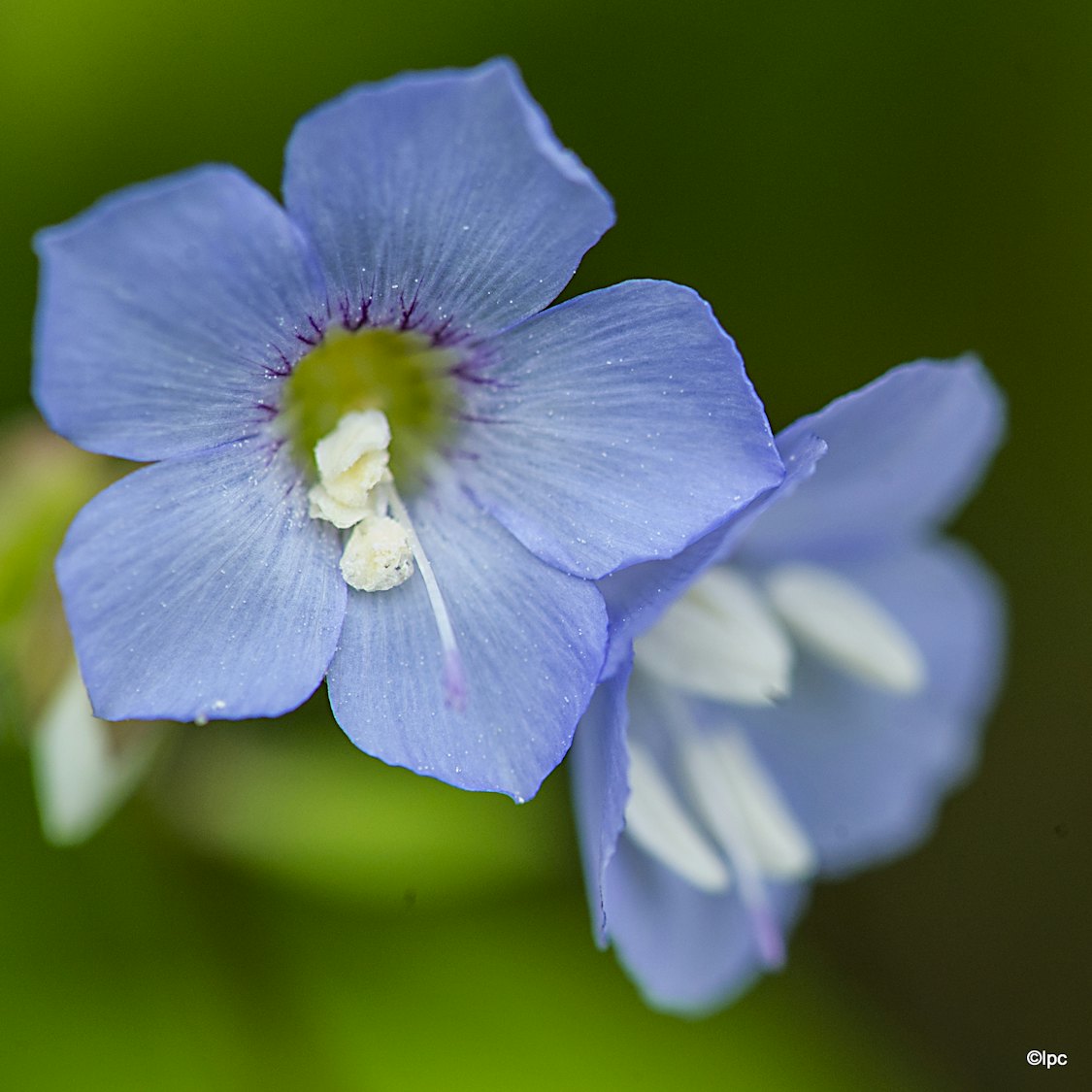
Uses: Under the name “Abscess root,” the dried roots of the plant were used as a herbal medicine historically, though the root is bitter and acrid tasting. According to WEBMD: “Abscess root is used for fever, cough, swelling, and other conditions. But there is no good scientific evidence to support any uses.”
It is not toxic to any type of pet or human. In fact, the blossoms are an edible addition to a salad…though I much prefer just looking at them on the plant.
Preferred Growth Conditions: It grows primarily in woodlands in shady or semi shady locations. It especially likes to be along streams and river banks where there is good drainage as it prefers moist, cool, humus rich soil. Jacob’s Ladder is an excellent addition to a partially shady garden when it has the moisture it needs. It attracts many native bees and butterflies.
Jacob’s ladder is, for the most part, disease, insect, and drought resistant once established in a garden. It is also classified as “deer and rabbit resistant,” which (one hopes) means they will leave it uneaten. However, I would not guarantee that!
It is a low maintenance plant. It is also more tolerant of the black walnut toxin (juglone) than most plants. Grown in a garden, it will be one to two feet high and the plant can spread as much as two feet. The leaves show off much better in a garden than they do in woodlands. Once they have bloomed, if the flower stems (not the leaves) are cut back to the base, they will usually rebloom. The foliage can be cut back up to one-third to promote growth as well. This is an excellent article on growing them.
Propagation: Jacob’s Ladder can be propagated by either seed or plant division. Seeds can be bought from several seed sources. The tiny brown seeds are sown in the soil in the spring, after frost danger has passed. They germinate quickly. When they are growing well, they should be thinned to about 18 inches apart. Though you will get lovely foliage in year one, you will not have blooms until year two.
Plants can also be purchased from nurseries. Be sure to obtain Polemonium reptans seeds or plants as it is the only Polemonium native to Iowa, and therefore will support native pollinators. One source of seeds that are Midwest grown is Prairie Moon Nursery.
These little spring ephemerals are lovely to have in your garden, with no downside. They do not spread aggressively, nor do they harm anything. They just brighten the spring garden and woodlands. Enjoy.

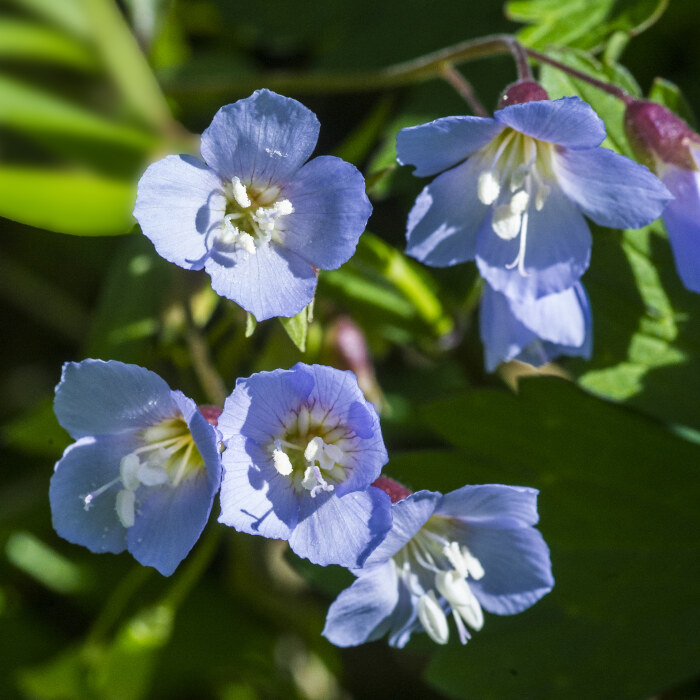
1 Comment
Lovely essay and photos...
Thank you very much.
PrairieFan Fri 7 Jul 8:30 PM